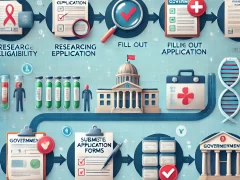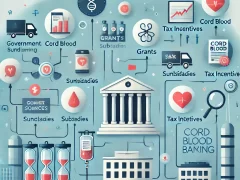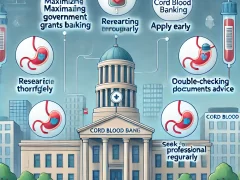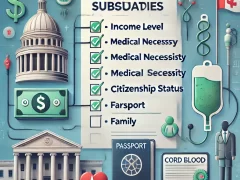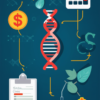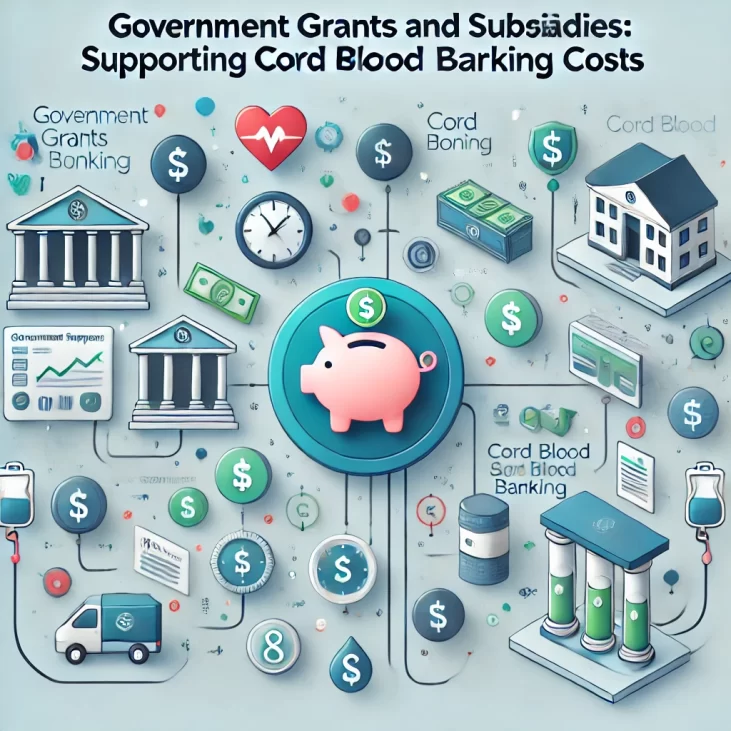
Government Grants and Subsidies for Cord Blood Banking
Unlocking Affordable Cord Blood Banking with Government Assistance
The costs associated with cord blood banking can be a significant barrier for many families, but government grants and subsidies are providing a lifeline. These financial support mechanisms are playing a crucial role in making this valuable healthcare service more accessible to a wider population.
Exploring the Importance of Cord Blood Banking
Cord blood banking has emerged as a critical component of modern healthcare, offering a wealth of potential medical benefits. Stored cord blood stem cells can be used to treat a variety of conditions, from blood disorders and immune system diseases to certain types of cancer. By preserving this valuable biological resource, families can secure a potential lifesaving treatment option for their child or even a family member in the future.
Government Grants: Bridging the Affordability Gap
Recognizing the importance of cord blood banking, governments around the world have implemented a range of grant programs and subsidies to support families in accessing this service. These initiatives aim to alleviate the financial burden and ensure that cost is not a prohibitive factor in making this healthcare decision.
In the United States, for example, the Stem Cell Therapeutic and Research Act of 2005 authorized the creation of the C.W. Bill Young Cell Transplantation Program, which provides funding for the collection and preservation of cord blood units. This program not only supports the national cord blood inventory but also offers financial assistance to eligible families to cover the costs of cord blood banking.
Similarly, in the United Kingdom, the National Health Service (NHS) offers a Cord Blood Donation Scheme, which covers the expenses associated with cord blood collection and storage for families who choose to donate their child’s cord blood to the public cord blood bank. This initiative ensures that the decision to donate is not hindered by financial constraints.
Accessing these government grants and subsidies often requires navigating a structured application process. Families interested in taking advantage of these programs should research the eligibility criteria, required documentation, and application deadlines to ensure a smooth and successful submission.
Some key considerations when applying for government assistance for cord blood banking include:
- Household income and financial need assessments
- Residency and citizenship requirements
- Specific program guidelines and restrictions
- Deadlines and application submission procedures
By carefully reviewing the application requirements and seeking assistance from program administrators, families can maximize their chances of securing the necessary financial support to make cord blood banking a viable option.
Empowering Families through Collaboration
The collaboration between government entities, healthcare providers, and cord blood banking organizations is crucial in ensuring the widespread accessibility of this valuable service. By aligning their efforts and resources, these stakeholders can effectively promote awareness, streamline the application process, and provide comprehensive support to families in need.
Unlocking the Future of Personalized Medicine
Ultimately, government grants and subsidies for cord blood banking represent a significant step towards democratizing access to this cutting-edge healthcare technology. By reducing the financial barriers, these initiatives are empowering families to make informed decisions and secure a potential source of lifesaving stem cells for their loved ones.
As the field of regenerative medicine continues to evolve, the availability of affordable cord blood banking services, backed by government support, will play a pivotal role in unlocking the full potential of personalized healthcare and improving the quality of life for individuals and communities around the world.
The Vital Role of Cord Blood in Regenerative Medicine
The Transformative Potential of Cord Blood
Cord blood, the blood that remains in the umbilical cord and placenta after childbirth, has emerged as a remarkable source of stem cells with immense potential in the field of regenerative medicine. These versatile cells possess the ability to develop into various cell types, making them a valuable asset in the treatment of a wide range of diseases and conditions.
Stem Cell Potency: The Key to Regenerative Therapies
Cord blood stem cells are unique in their undifferentiated state, meaning they have not yet specialized into specific cell types. This potency allows them to be directed to become various cell types, such as blood cells, bone cells, or nerve cells, depending on the needs of the recipient. This versatility is crucial in regenerative medicine, where the goal is to repair or replace damaged or diseased tissues and organs.
Cord Blood Transplants: Saving Lives
One of the primary applications of cord blood stem cells is in the field of transplantation. Cord blood has been used successfully in the treatment of a wide range of hematological disorders, such as leukemia, lymphoma, and sickle cell disease. In these cases, the patient’s unhealthy blood cells are replaced with healthy cord blood stem cells, which then grow and produce new, healthy blood cells.
Advancing Regenerative Therapies
Beyond transplantation, cord blood stem cells are being actively investigated for their potential in regenerative therapies. Researchers are exploring the use of these cells in the treatment of conditions such as cerebral palsy, type 1 diabetes, and spinal cord injuries. By leveraging the ability of cord blood stem cells to differentiate into specific cell types, scientists aim to develop therapies that can repair or replace damaged tissues and organs, offering new hope for individuals living with these challenging conditions.
The Importance of Cord Blood Banking
Given the immense value of cord blood stem cells, the practice of cord blood banking has become increasingly important. Cord blood banking involves the collection, processing, and storage of a newborn’s cord blood for potential future use. This ensures that these precious stem cells are available if the individual or a family member requires them for medical treatment.
Overcoming Barriers to Accessibility
One of the key challenges in the widespread adoption of cord blood therapies is the cost associated with banking and storing cord blood. This can create barriers to access, particularly for families with limited financial resources. To address this issue, government grants and subsidies have emerged as crucial mechanisms to support and promote cord blood banking initiatives.
Government Support for Cord Blood Banking
Recognizing the significant potential of cord blood stem cells, many governments around the world have implemented programs and policies to encourage and facilitate cord blood banking. These initiatives often include financial assistance, tax incentives, and public awareness campaigns to make cord blood banking more accessible and affordable for families.
The Impact of Governmental Initiatives
The impact of government grants and subsidies for cord blood banking has been remarkable. These programs have helped to increase the availability and diversity of cord blood units, ensuring that more patients have access to potentially life-saving treatments. Moreover, the financial support has encouraged more families to consider cord blood banking, further expanding the pool of available stem cells.
Cord blood stem cells hold immense promise in the field of regenerative medicine, offering new avenues for the treatment of a wide range of diseases and conditions. The vital role of government grants and subsidies in supporting cord blood banking initiatives has been instrumental in driving progress and increasing accessibility to these transformative therapies. As research continues to unlock the full potential of cord blood, the collaboration between the public and private sectors will be crucial in ensuring that these groundbreaking advancements benefit individuals and communities worldwide.
Addressing the Cost Barriers to Cord Blood Banking
Exploring Government Grants and Subsidies for Cord Blood Banking
Cord blood banking has become an increasingly important aspect of modern healthcare, offering potential treatments for a wide range of medical conditions. However, the cost of cord blood banking can be a significant barrier for many families, making it inaccessible to those who could benefit the most. Fortunately, governments around the world have recognized the importance of cord blood banking and have implemented various grant and subsidy programs to help address this issue.
Governments have taken a proactive approach to supporting the cord blood banking industry, recognizing its potential to save lives and improve medical outcomes. These initiatives have taken many forms, including direct financial assistance, tax incentives, and public-private partnerships. By understanding the available programs and their eligibility requirements, families can access the resources they need to make cord blood banking a viable option.
Unlocking Financial Assistance for Cord Blood Banking
One of the primary ways governments have addressed the cost barriers of cord blood banking is through the implementation of financial assistance programs. These can take the form of grants, subsidies, or tax credits, helping to offset the substantial upfront costs associated with cord blood banking. For example, some countries offer families a fixed amount of financial support to cover the initial storage fees, while others provide ongoing subsidies to help maintain the cord blood unit over time.
Exploring Public-Private Partnerships in Cord Blood Banking
In addition to direct financial assistance, governments have also leveraged public-private partnerships to expand access to cord blood banking services. These collaborations between the public sector and private cord blood banks can result in reduced costs for families, as well as the development of specialized programs and initiatives tailored to the needs of the local population.
The Role of Advocacy and Awareness in Accessing Cord Blood Banking Assistance
While government-led initiatives are crucial in addressing the cost barriers of cord blood banking, the success of these programs often depends on the level of public awareness and advocacy. By educating families about the availability of financial assistance and the importance of cord blood banking, advocacy groups and healthcare providers can help ensure that these resources reach the individuals and communities that need them most.
Accessing the various grant and subsidy programs available for cord blood banking can be a complex and often confusing process. Families may need to navigate a maze of eligibility requirements, application processes, and program-specific regulations. By working closely with healthcare providers, cord blood banks, and government agencies, families can better understand the available options and ensure they are taking full advantage of the financial assistance opportunities.
Ensuring Equitable Access to Cord Blood Banking
Ultimately, the goal of government-led cord blood banking assistance programs is to ensure that this important healthcare service is accessible to all families, regardless of their financial circumstances. By removing the cost barriers and making cord blood banking more affordable, these initiatives can help to promote greater equity in healthcare and improve the overall health outcomes of the population.
Policy Initiatives to Promote Cord Blood Banking Access
Expanding Cord Blood Banking Access through Government Initiatives
The preservation and storage of cord blood have become increasingly important in the field of regenerative and personalized medicine. Cord blood, a rich source of hematopoietic stem cells, can be used to treat a variety of medical conditions, including blood disorders, immune deficiencies, and certain types of cancer. However, the high costs associated with cord blood banking have often limited access to this valuable resource, particularly for underserved communities.
Addressing the Cost Barrier
One of the primary barriers to widespread cord blood banking is the financial burden it places on families. The initial collection, processing, and storage of cord blood can cost hundreds, if not thousands, of dollars. This cost can be prohibitive for many individuals, effectively excluding them from the potential benefits of cord blood banking. To address this issue, policymakers have implemented various initiatives to support and subsidize the costs of cord blood banking.
Government Grants and Subsidies
Governments around the world have recognized the importance of ensuring equitable access to cord blood banking services. As a result, many have introduced grant programs and subsidies to help offset the costs for families. These initiatives can take several forms, such as:
Direct Subsidies: Some governments offer direct financial assistance to families, covering a portion or even the entire cost of cord blood banking. This can make the process more affordable and accessible to a wider range of individuals.
Tax Incentives: Governments may offer tax credits or deductions for families who choose to bank their child’s cord blood. This can help alleviate the financial burden and encourage more people to participate in cord blood banking.
Public Cord Blood Banks: In some countries, governments have established publicly-funded cord blood banks, where the costs of collection, processing, and storage are borne by the state. This model ensures that cord blood is available to all citizens, regardless of their financial status.
Expanding Access and Utilization
In addition to addressing the cost barrier, government initiatives have also focused on increasing awareness and utilization of cord blood banking services. This can include:
Public Awareness Campaigns: Governments may launch educational campaigns to inform the public about the benefits of cord blood banking and the available support programs.
Integration with Healthcare Systems: Efforts to integrate cord blood banking into routine prenatal and postnatal care can help normalize the practice and make it more accessible to a broader population.
Research and Innovation: Governments may invest in research and development related to cord blood banking, including exploring new storage techniques, expanding medical applications, and improving the overall efficiency of the process.
By addressing the financial and logistical barriers to cord blood banking, these government initiatives aim to ensure that this valuable resource is available to all members of society, regardless of their socioeconomic status. As the field of regenerative medicine continues to evolve, ensuring equitable access to cord blood banking will be crucial for unlocking its full potential and improving healthcare outcomes.
The Future of Cord Blood Banking and Public-Private Partnerships
The Rise of Cord Blood Banking and the Role of Government Grants
Cord blood banking has emerged as a innovative and promising field in the realm of stem cell research and regenerative medicine. As awareness about the potential therapeutic applications of cord blood stem cells grows, governments around the world have recognized the importance of supporting this burgeoning industry. Through various grant programs and subsidies, policymakers are working to ensure that cord blood banking remains accessible and affordable for families.
The Significance of Cord Blood Stem Cells
Cord blood, the blood that remains in the umbilical cord and placenta after childbirth, is a rich source of hematopoietic (blood-forming) stem cells. These versatile cells have the remarkable ability to develop into a variety of cell types, including red blood cells, white blood cells, and platelets. This makes them invaluable for the treatment of a wide range of medical conditions, from blood disorders and immune deficiencies to certain types of cancer.
Government Initiatives to Support Cord Blood Banking
Recognizing the immense potential of cord blood stem cells, governments around the world have implemented various programs and initiatives to support the growth and accessibility of cord blood banking. These efforts often take the form of grant funding, subsidies, and other financial incentives.
In the United States, for example, the Stem Cell Therapeutic and Research Act of 2005 established the National Cord Blood Inventory, a program that provides federal funding to help build a nationwide network of publicly accessible cord blood banks. Similarly, the European Union has launched initiatives like the Horizon 2020 program, which includes funding for projects focused on advancing cord blood research and clinical applications.
Public-Private Partnerships in Cord Blood Banking
To further bolster the cord blood banking industry, many governments have forged strategic partnerships with private sector stakeholders. These public-private collaborations can take various forms, such as joint research and development projects, co-funding of cord blood collection and storage facilities, or the establishment of regulatory frameworks to ensure quality and safety standards.
By leveraging the expertise and resources of both the public and private sectors, these partnerships can drive innovation, expand access to cord blood banking services, and ultimately improve patient outcomes. For example, some countries have implemented tax incentives or reimbursement schemes to encourage private cord blood banks to participate in public cord blood banking programs.
The Impact of Government Support on Cord Blood Banking
The infusion of government support, in the form of grants and subsidies, has had a transformative impact on the cord blood banking industry. By reducing the financial barriers associated with cord blood collection, processing, and storage, these initiatives have helped to make this technology more accessible to families from diverse socioeconomic backgrounds.
Moreover, government funding has enabled cord blood banks to invest in cutting-edge research and development, further expanding the clinical applications of cord blood stem cells. This, in turn, has led to the discovery of new treatments and the refinement of existing therapies, ultimately benefiting patients in need of regenerative medicine solutions.
Challenges and the Ongoing Need for Support
Despite the progress made, the cord blood banking industry still faces significant challenges. The costs associated with establishing and maintaining a cord blood bank can be substantial, and families may struggle to afford the fees for private cord blood banking services. Additionally, there is a need to raise awareness about the importance of cord blood donation and the availability of public cord blood banking programs.
Governments can play a pivotal role in addressing these challenges by continuing to provide financial support, streamlining regulatory processes, and fostering collaborative efforts between the public and private sectors. By doing so, they can help ensure that the promise of cord blood stem cells is realized, and that families have access to this potentially life-saving technology regardless of their financial circumstances.
The future of cord blood banking is intrinsically linked to the continued support and involvement of governments worldwide. Through strategic grant programs, subsidies, and public-private partnerships, policymakers can help drive the growth and accessibility of this revolutionary field, ultimately benefiting patients and advancing the frontiers of regenerative medicine.
Conclusion
Government grants and subsidies play a vital role in supporting the growth and accessibility of cord blood banking, a crucial component in the advancement of regenerative medicine. By addressing the significant costs associated with cord blood banking, these financial incentives help to remove barriers and ensure that more families have the opportunity to preserve this invaluable biological resource.
The vital role of cord blood in regenerative medicine cannot be overstated. Cord blood stem cells have the remarkable ability to develop into a wide range of specialized cells, making them a valuable tool in the treatment of various medical conditions, from blood disorders to neurodegenerative diseases. As the field of regenerative medicine continues to evolve, the availability and utilization of cord blood resources will become increasingly important.
Unfortunately, the high costs associated with cord blood banking have long been a significant barrier, preventing many families from taking advantage of this transformative technology. Government grants and subsidies aim to alleviate this burden, making cord blood banking more accessible and affordable for a broader segment of the population.
Policymakers have recognized the importance of promoting cord blood banking access, and several initiatives have been implemented to address the issue. These include tax credits, direct funding for public cord blood banks, and the establishment of national cord blood banks. By leveraging public-private partnerships, these efforts have the potential to significantly expand the availability of cord blood resources and ensure that more individuals can benefit from the life-saving potential of this remarkable biological material.
Looking to the future, the continued collaboration between government entities, healthcare providers, and the private sector will be crucial in shaping the landscape of cord blood banking. As new advancements in regenerative medicine emerge, the need for a robust and accessible cord blood infrastructure will only grow. By maintaining a steadfast commitment to supporting cord blood banking through grants, subsidies, and strategic policy initiatives, we can help to ensure that this vital resource is available to those who need it most, ultimately improving outcomes and transforming lives.
Government grants and subsidies are a critical component in addressing the cost barriers to cord blood banking and promoting the widespread adoption of this life-saving technology. By recognizing the vital role of cord blood in regenerative medicine and implementing targeted policy initiatives, we can work towards a future where more families have the opportunity to preserve and unlock the vast potential of this remarkable biological resource.

